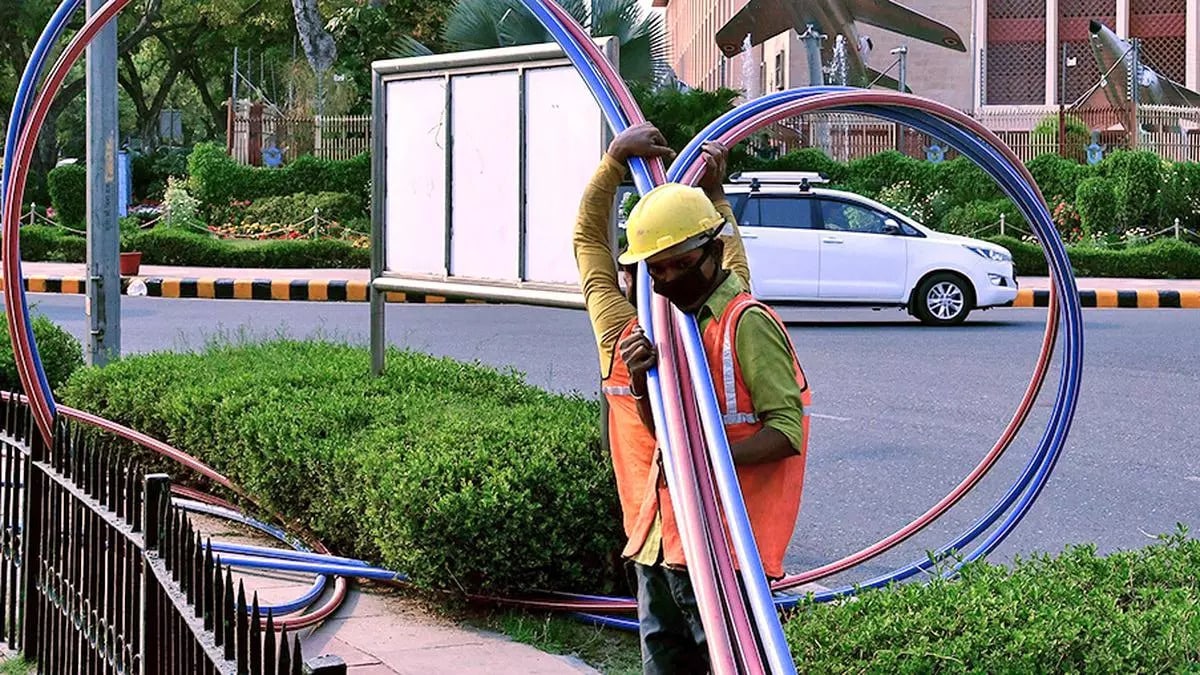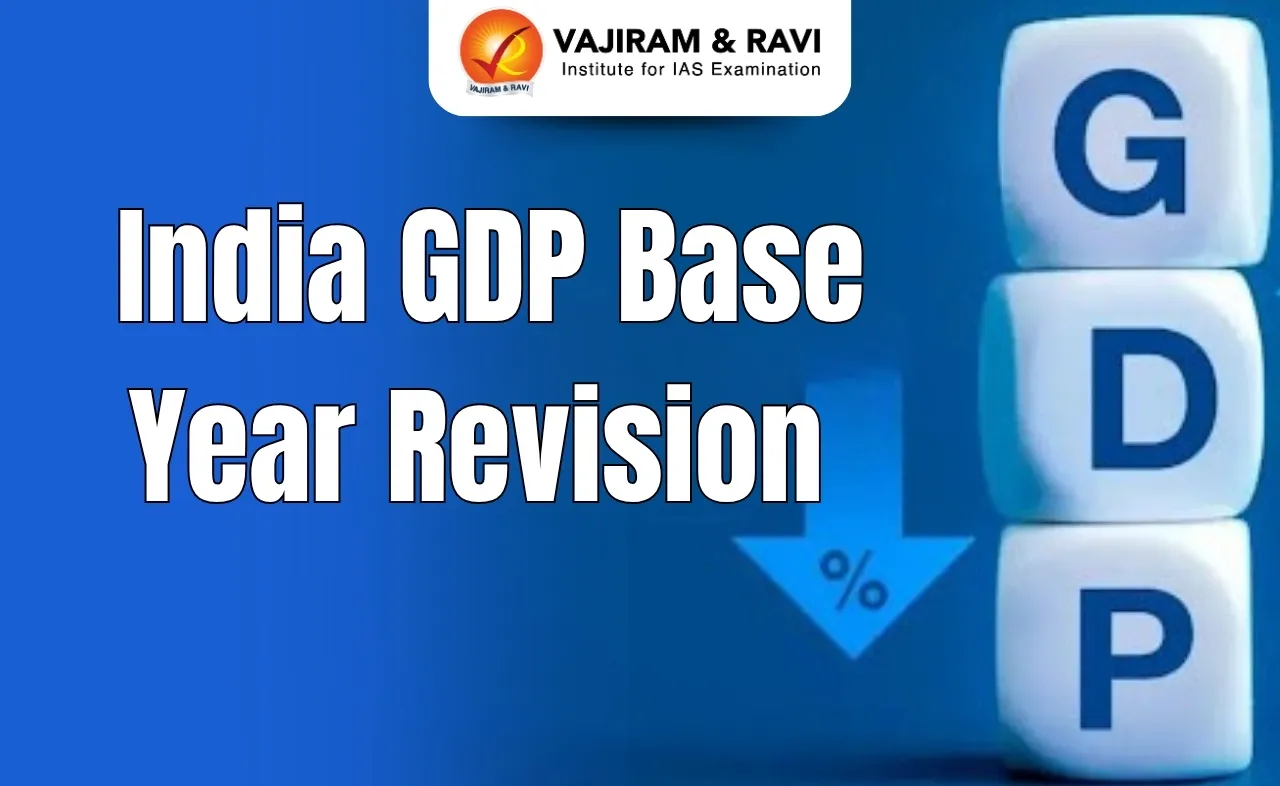What’s in today’s article?
- Why in News?
- About BharatNet Project
- Features & Benefits of BharatNet
- Budget of BharatNet
- Implementation of BharatNet
- Progress of BharatNet
- Challenges Associated with BharatNet Project
- News Summary
Why in News?
- The Union Cabinet has approved an outlay of Rs 1.39 lakh crore for BharatNet, the government’s project for last-mile connectivity across 6.4 lakh villages in the country.
About BharatNet Project
- BharatNet is the world’s largest optical fiber-based rural broadband connectivity project.
- It is executed by Bharat Broadband Network Limited (BBNL), a special purpose organisation under the Telecom Ministry.
- It is an ambitious rural internet access programme. An initiative by the Union government under its Digital India programme.
Features & Benefits of BharatNet
- Using optical fibre, the programme is intended to bring broadband internet connectivity to each of the more than 2.5 lakh gram panchayats across the country.
- The government intends to provide a minimum of 100 Mbps bandwidth at each Gram Panchayat through BharatNet so that everyone, especially those in rural India, can access online services.
- As part of BharatNet project, the Centre will also provide last mile connectivity through Wi-Fi and other means and is setting up Wi-Fi hotspots in all gram panchayats.
- This covers services such as e-governance, e-learning, e-banking, e-commerce, and e-health.
- Also, extension of reach of BharatNet to all inhabited villages with reliable, quality, high speed broadband will enable better access of e-services offered by various Central and State Government agencies.
- The penetration and proliferation of broadband is also expected to increase direct and indirect employment and income generation.
- Under the BharatNet project, the home broadband package will start from Rs 399 a month, giving 30 Mbps unlimited data, bundled with OTT offering, etc.
Budget of BharatNet
- The total budget allocation for the BharatNet project is Rs. 61,000 crore.
- Funds for the BharatNet project are allocated as a whole and not state/Union Territory-wise.
- A lump sum amount is allocated and disbursed from Universal Service Obligation Fund (USOF) to BBNL for execution of BharatNet project.
- USOF is name for the levies collected by the Centre from telecom companies with a view to ensuring funding and development of communication services in rural and underserved areas.
Implementation of BharatNet
- In 2016, the DoT approved to implement the project in three phases.
- Phase-I:
- 1,00,000 GPs. under implementation.
- Being executed by 3 CPSUs viz. BSNL, RailTel and PGCIL. Targeted to be completed by March 2017.
- Phase-II:
- Balance GPs using optical mix of underground/aerial OFC, radio and satellite to be used.
- To be executed by 3 CPSUs and State Govts. through their Discoms or any other agency.
- Targeted to be completed by December 2018.
- Phase-III:
- Futuristic network with ring topology to be used between districts and blocks and blocks and GPs.
- Targeted to be completed by 2023.
- Phase-I:
Progress of BharatNet
- The initial scope of the project was to cover 2.5 lakh gram panchayats in the country with optical fiber by August 2021.
- However, that deadline was missed.
- Around 1.94 lakh villages have been connected at present and rest of the villages are expected to be connected in the next 2.5 years.
- The project progress was affected due to lockdown and movement restrictions due to COVID pandemic.
- In the Union Budget 2022-23, the Government extended the project deadline to 2025.
Challenges Associated with BharatNet Project
- Slow Pace of Implementation:
- The pace of BharatNet has been slow given that the government has been able to make just 194,000 gram panchayats service ready so far.
- From November 2022 till March this year, about 6,000 gram panchayats have been made service ready.
- PPP Mode of Implementation:
- The Public-Private-Partnership (PPP) mode for implementation of BharatNet, which was approved by the Union Cabinet in June 2021, is yet to take off.
- The first request for proposal (RFP) for implementation of the project, which was floated in July 2021, failed to get any response from private companies.
- The industry had highlighted that some of the terms and conditions of the tender were too onerous for the private players while the revenue sharing model proposed by the government was also unfavourable to them.
- The Government will come out with a revised PPP model for BharatNet project in a couple of months.
News Summary
- The Union Cabinet approved and additional Rs 1.39 lakh crore for modernising the BharatNet project which involves changing its execution strategy and providing fiber connections to the last mile through Village Level Entrepreneurs.
- With this upgrade, the government is looking to speed up its process in connecting all the remaining villages over the next 2.5 years.
- The Government, under the PPP model, will involve village level entrepreneurs or Udyamis to take the fiber connections to the homes on a 50:50 revenue-sharing basis.
- The cost for taking the infrastructure to the home will be borne by the government;
- The rural entrepreneur will only need to be involved in maintenance and operations of home connections, including addressing consumer complaints related to fiber cuts, etc.
Q1) What is Bandwidth in Networking?
Network bandwidth is a measure of the data transfer rate or capacity of a given network. It’s a crucial network measurement for understanding the speed and quality of a network. Network bandwidth is commonly measured in bits per second (bps).
Q2) What is Public-Private-Partnership?
A public–private partnership is a long-term arrangement between a government and private sector institutions. Typically, it involves private capital financing government projects and services up-front, and then drawing revenues from taxpayers and/or users over the course of the PPP contract.
Source: Govt tweaks BharatNet, clears Rs 1.39 lakh crore for last-mile broadband link | USOF
Last updated on June, 2025
→ UPSC Notification 2025 was released on 22nd January 2025.
→ UPSC Prelims Result 2025 is out now for the CSE held on 25 May 2025.
→ UPSC Prelims Question Paper 2025 and Unofficial Prelims Answer Key 2025 are available now.
→ UPSC Calendar 2026 is released on 15th May, 2025.
→ The UPSC Vacancy 2025 were released 1129, out of which 979 were for UPSC CSE and remaining 150 are for UPSC IFoS.
→ UPSC Mains 2025 will be conducted on 22nd August 2025.
→ UPSC Prelims 2026 will be conducted on 24th May, 2026 & UPSC Mains 2026 will be conducted on 21st August 2026.
→ The UPSC Selection Process is of 3 stages-Prelims, Mains and Interview.
→ UPSC Result 2024 is released with latest UPSC Marksheet 2024. Check Now!
→ UPSC Toppers List 2024 is released now. Shakti Dubey is UPSC AIR 1 2024 Topper.
→ Also check Best IAS Coaching in Delhi
























